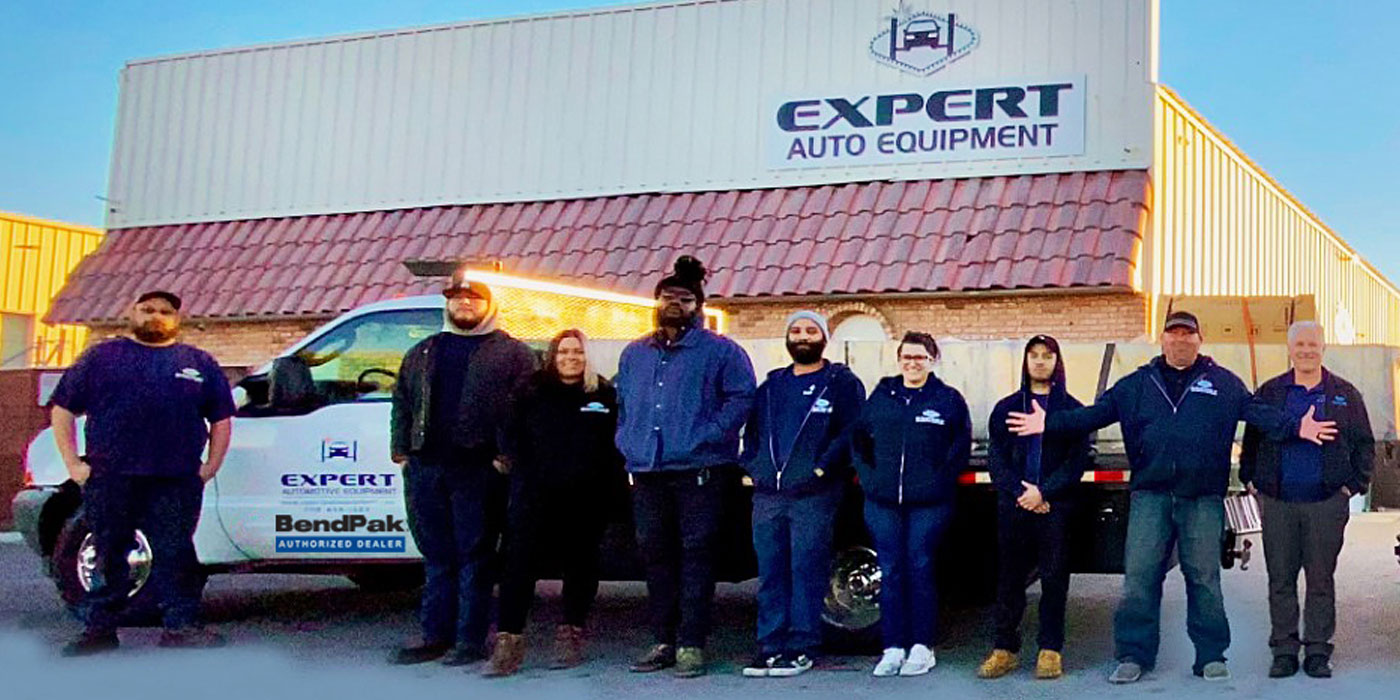A stroll down the lighting products aisle can be an illuminating experience these days.
More and more new lighting products are competing for limited shelf space as lighting suppliers expand their offerings. The proliferation of new types of lamps and bulbs can be confusing for a customer who may be unsure about which product he should buy and why. Should he buy a stock replacement lamp, or should he upgrade to a higher output or higher performance type of lamp? So in addition to figuring out which bulb fits a particular year, make and model of vehicle, you may also have to provide some guidance on what the various upgrade options are and the benefits they provide.
Several factors are driving lighting technology today. One is the use of brighter high-performance lighting on a growing number of late-model luxury vehicles. In the late 1990s, two new types of "xenon" headlamps were introduced. One type is the "High Intensity Discharge," or HID lighting system, that uses a special high-voltage bulb that contains no filament. Inside the HID bulb are two electrodes separated by a gap, and a mixture of xenon gas, mercury and halide salts. A ballast unit steps up the base voltage supplied to the HID lamp to create an electrical arc between the electrodes. This produces a "plasma discharge" inside the bulb that gives off a brilliant bluish colored light.
The color of light produced by a light source is measured in degrees "Kelvin" (K) and described where it falls on the visible spectrum. Natural daylight is rated at 4,500K, which is where the human eye sees most clearly. By comparison, the OEM standard halogen headlamps on most cars and trucks produces light with a color temperature rating of about 3,200K, which gives it a duller, yellowish appearance. HID lighting, on the other hand, typically produces light in the 4,200K range and is much closer to natural daylight.
HID lighting systems are also much more efficient than standard halogen headlamps, producing about 75 lumens (a measure of light output) per watt. And because an HID bulb has no filament to burn out, they last three to five times longer than a standard halogen bulb. But the required ballast electronics also makes HID lighting systems very expensive, so they’re currently only used on high-end luxury cars and SUVs like Mercedes, Porsche and Lincoln. HID replacement bulbs include D1S, D2S, D1R and D2R – and they are expensive.
For those who want the performance of HID headlamps in a vehicle they are currently driving, there are several upgrade options from which to choose.
One is to upgrade to "blue" headlamps that have a special blue coating that filters out the yellow rays produced by the filament. The blue lamps actually produce a brilliant white light that improves nighttime visibility – but without the bluish tint of HID lighting that some oncoming drivers may find to be distracting or annoying. The blue headlamps replace the stock lamps perfectly, require no wiring modifications or other changes, and they are street legal in all 50 states. The main benefits provided by this type of upgrade are improved clarity and reduced glare for all kinds of driving conditions.
Another upgrade option to improve lighting performance and driving safety is an "ultra-white" xenon-filled headlamp. This is a premium-type product that provides up to 80 percent more light. The optics may also be better with some lamps designed to cast a 30 percent wider beam pattern on the road for better peripheral viewing when turning. Some xenon headlamps use a high-powered, 55-watt low-beam filament to make it brighter and more efficient than standard halogen and incandescent headlamps. The light produced by the bulb is also whiter (around 3,800K) but does not use a blue surface coating to filter the light. These are also direct-fit replacement bulbs for stock applications and require no modifications.
For some driving situations whiter light is not the way to go. For clear weather driving, white light is hard to beat. But when driving in fog or heavy rain, white light tends to scatter and reflect creating glare that reduces visibility. For these kinds of driving conditions, "fog" lamps that produce a yellowish light (2,700K) will reduce glare and improve visibility. Aftermarket fog lamp kits are relatively easy to install though some wiring modifications are required. Their main advantage is that they provide an extra measure of visibility and driving safety in severe weather.
The optics of a fog lamp are just as important as the color of the light itself. A good quality fog lamp should produce a low, flat beam pattern to minimize glare and reflections back into the driver’s eyes. This is controlled by the design of the reflector, lens and/or the use of shields.
For clear weather, high-speed driving, driving lights are sometimes used to extend range and improve visibility. A good set of driving lights can give the driver more time to react to obstacles in the road ahead. They’re great for nighttime highway driving but less useful on winding roads. A good set of quality driving lights should produce a bright, white beam that shines far down the road. Projection or "ellipsoid" lights are used for driving lights and/or the high beams on many upscale imports because they direct a narrowly focused beam of light down the road ahead. These lights have a fisheye-like lens in front of the reflector housing to focus and project the light. Aftermarket driving light kits are relatively easy to install but do require some wiring modifications.
For older vehicles that were originally equipped with round or rectangular sealed beam headlamps, you still have to stock replacement lamps. But upgrade options here include brighter halogen lamps and conversion kits that replace the original one-piece sealed beams with a two-piece composite headlamp. Conversion kits typically provide better optics to improve illumination of the road, increased light output and easier maintenance when bulb replacement is necessary.
Compared to standard incandescent bulbs, halogen bulbs produce more light per watt. Incandescent bulbs typically produce 16 to 18 lumens per watt, while halogen bulbs produce anywhere from 20 to as much as 33 lumens/watt depending on the filament and the gases inside the bulb. Halogen bulbs perform better because they use a thinner tungsten filament that creates more resistance and burns hotter and brighter. The gases inside the bulb (bromine, krypton and argon) help cool the filament and recycle the tungsten as it boils off the filament to prolong the life of the bulb. The bulb is also made from a special kind of quartz glass that is needed to withstand the higher operating temperature. That’s why halogen bulbs should be handled with care. The oils left by a fingerprint can lead to premature bulb failure.
Moving to the rear of the vehicle, things haven’t changed a great deal over the years. Taillight and stop light bulbs have gotten smaller and changed from socket-and-pin receptacles to push-fit receptacles. Most vehicle manufacturers have also gone to composite taillight assemblies rather than lens covers – which increases the price or repair cost if a taillight is broken. But aftermarket replacement taillight assemblies can save customers quite a few bucks compared to new OEM units. The same goes for aftermarket headlamp assemblies though coverage is limited to the more popular models.
There’s also a growing market for customizing a vehicle’s appearance by changing the taillight housings. The clear plastic chrome look is a popular conversion for many sport compact cars as well as trucks and SUVs.
Though Light Emitting Diodes (LEDs) are not yet being used on production vehicles for headlamps (they are coming within the next couple of years), they are used for center high-mount stop lights (CHMSL) as well as the taillights on a growing number of luxury cars and SUVs. LEDs have a number of advantages over conventional incandescent bulbs. They last forever (up to 100,000 hours), which is not good for replacement bulb sales. They have no filament and are not affected by shock or vibration, which makes them ideally suited for trunk, hatchback or liftgate-mounted applications. And they consume very little power, only about 1/10th as much current as a comparable incandescent light for the same amount of light that’s produced.
Another product category that has exploded in recent years and is clawing for shelf space is custom interior lighting products. This includes everything from color-tinted bulbs to fluorescent lighting, ultraviolet lighting, LEDs, fiber optic lighting, floor mats and seat covers with illuminated edging, hood lights, tire lights and even illuminated fuzzy dice. There seems to be no limit on the imaginative uses of custom lighting. Such products are hot with younger drivers who want to individualize their vehicles and who buy aftermarket sound systems, custom wheels, spoilers, wings and other performance bolt-on accessories and dress-up goodies.
Finally, there are the related items in the lighting products aisle that may or may not create an add-on sales opportunity. These include such things as flasher units, fuses, wiring and splicing kits, and special wiring tools such as wiring pliers, test lights and DVOMs (digital volt ohm meters). Don’t forget to sell these add-on items to boost your profits.










